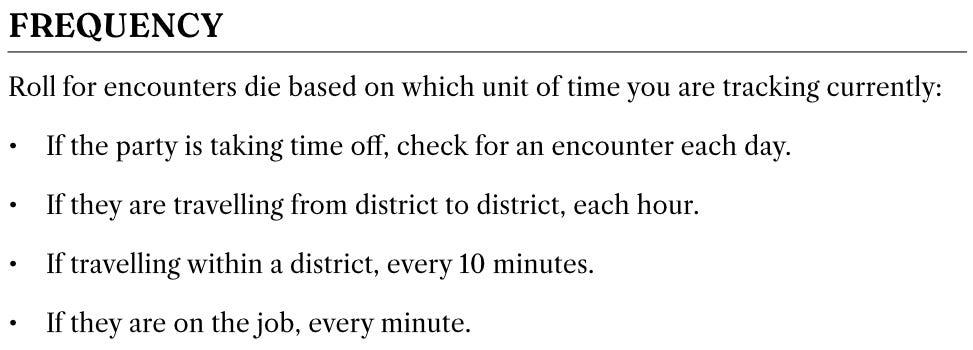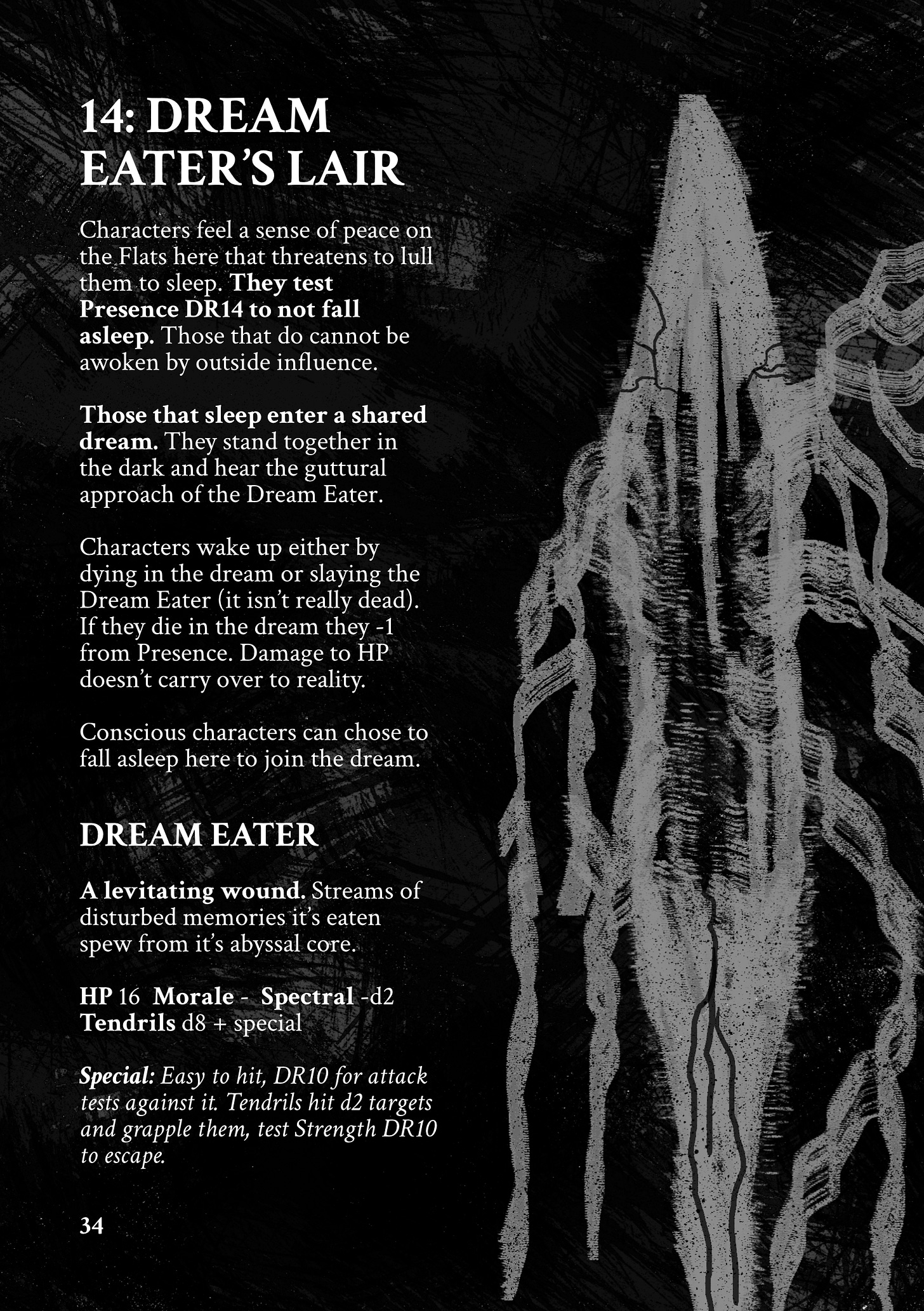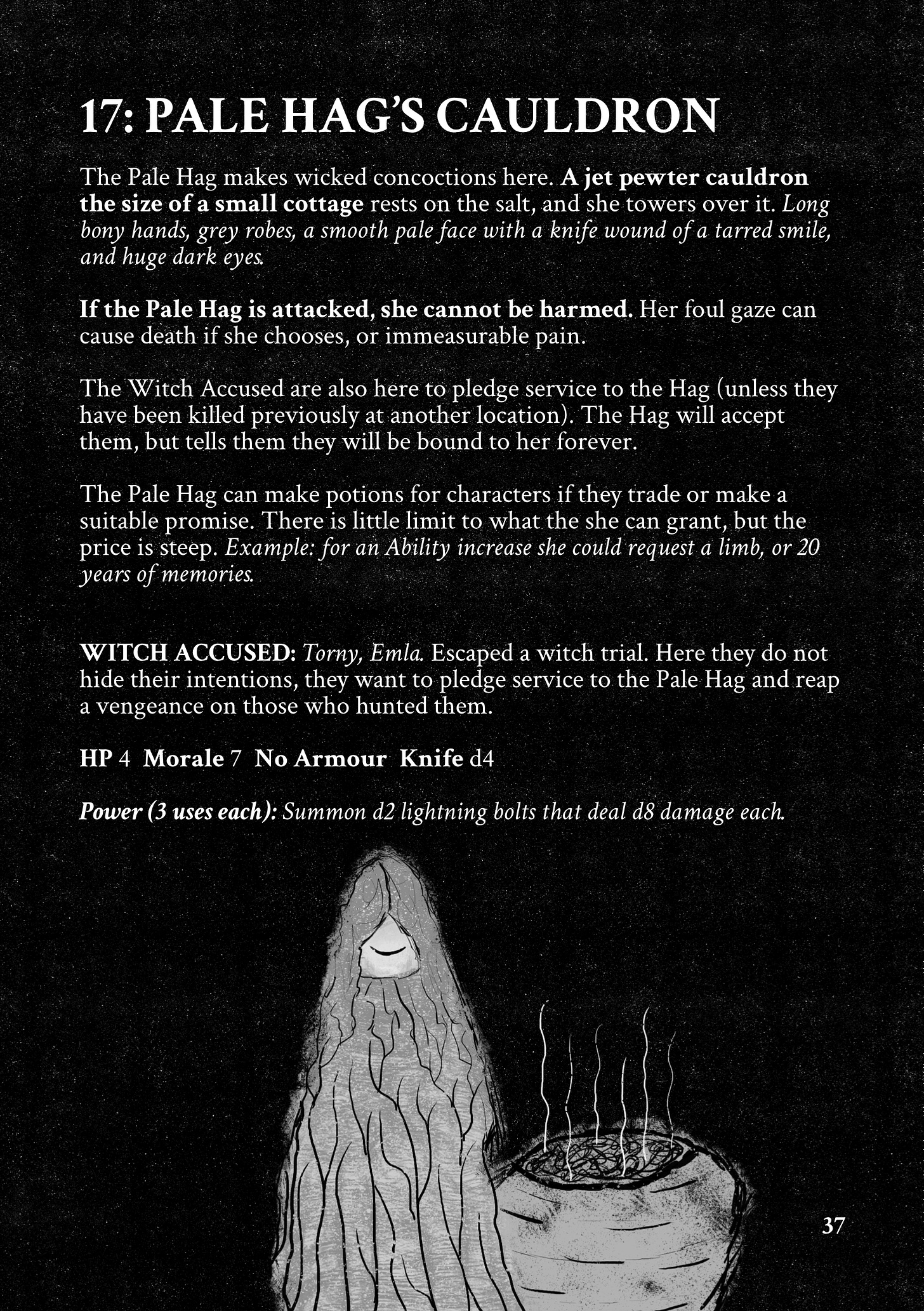This article contains affiliate links, meaning I get a commission if you make purchases using these links, at no cost to you.We’re over half way through this breakdown of my hack (Blades into the Odd) for running Blades in the Dark’s (Blades) setting of Duskwall with Into the Odd (ItO).
We’ve done character creation and gear; lairs, upgrades, and detachments; and time tracking.
Today we’re talking encounters, and like a good vulture, I’m going to use info about Duskwall that Blades provides us with to fuel an encounter procedure.
Encounter tables
For each district of Duskwall, Blades gives us this nifty breakdown:
We can use this to guide us as to what kind of encounters and risk levels each district should have. This is neat for travel between districts because players can make choices to avoid areas with a high encounter die.
By including ‘nothing’ in the encounter table, we don’t have to do an encounter check then roll on a seperate table. We check for encounters with one roll of a d20.
We’ve got some options for generating encounters if we don’t feel like pre-writing the encounters for each area of Duskwall: we could roll up an event using the Blades ‘event generator’ or use one of the book’s rumours to inspire a situation further.
If people/creatures are involved, I would use my wants and emotions based reaction table overhaul, since in Duskwall a lot of encounters will be with people and won’t necessarily be violent.
Frequency
But when do we roll an encounter?
In short: encounter checks are context dependent. Example: frequency of encounter check is different depending on whether you are on a job or travelling.
What next?
We’ve got a couple more things to look at: factions and organising the setting material. Stay tuned for those.
Morktober
We’re still releasing Morktober content every day! Here’s some of our favourites from the last week.
Recommendations
Blog: Luke Gearing shares some insight into his process for writing Wages of Sin, an upcoming Mothership project focused on bounty hunting. It’s a concise dive into the practicalities of tackling an 80k+ word project, and well worth a read for anyone interested in writing for games.
Blog 2: Odinson Games is making part of a mega-dungeon for the substack megadungeon project led by Thog’s Table. This entry is a neat summary of Odinson’s process for building out the initial landscape. ~it makes me jealous and revives my urge to make a megadungeon~








